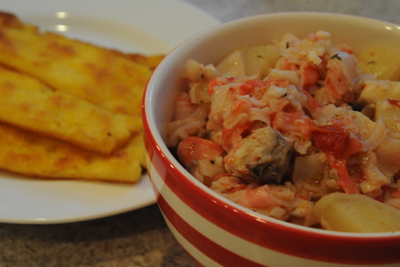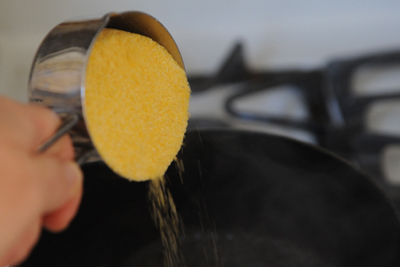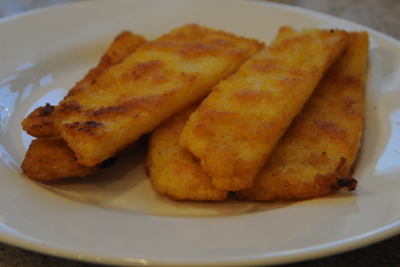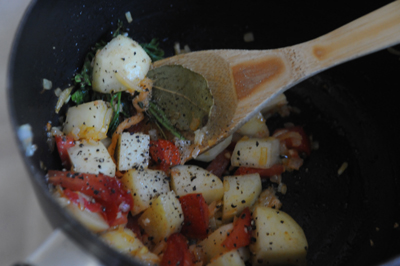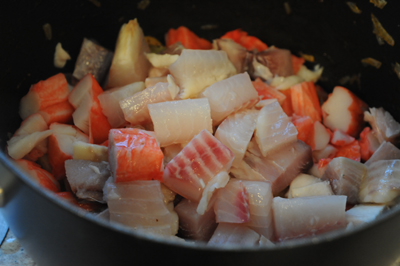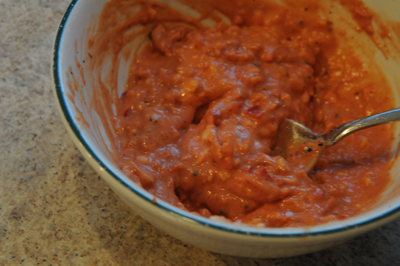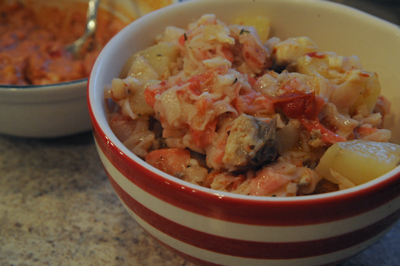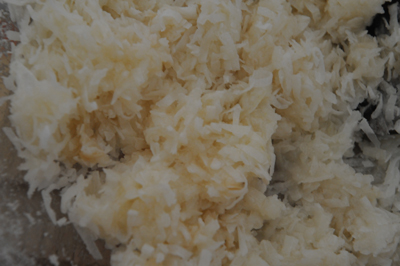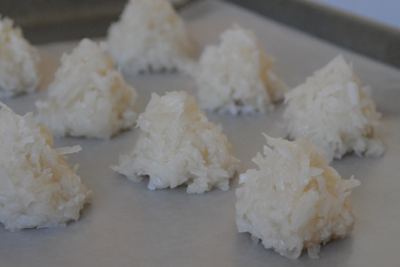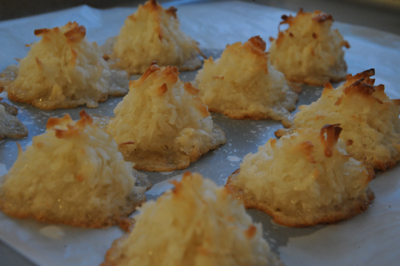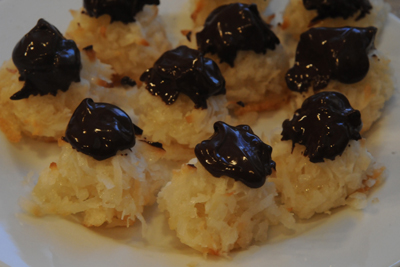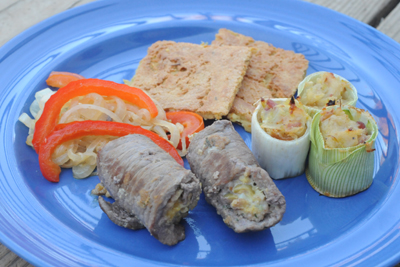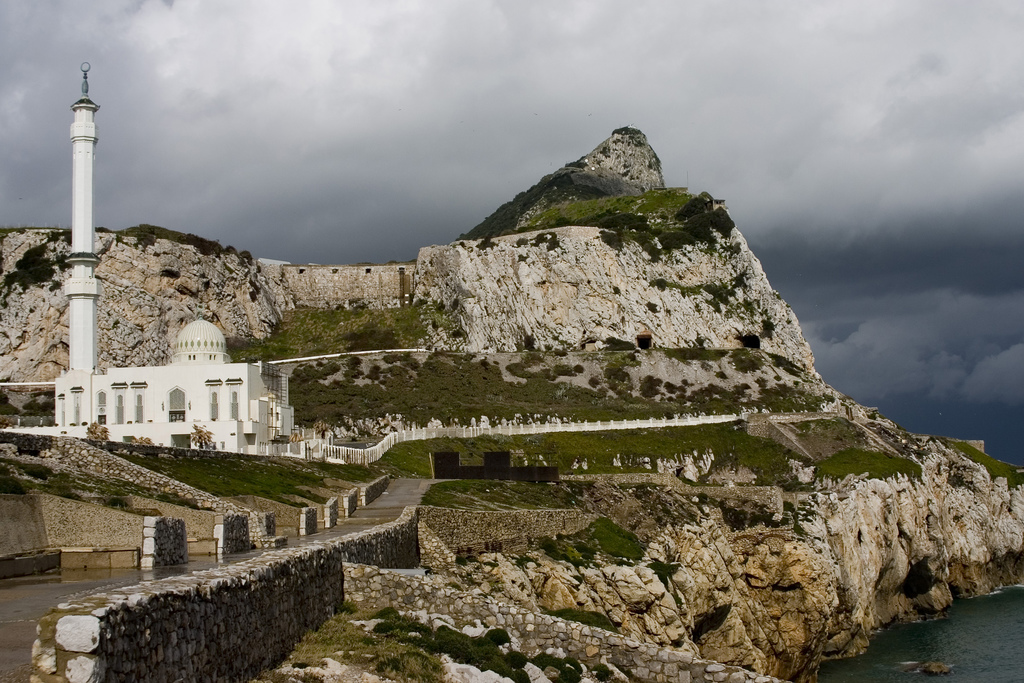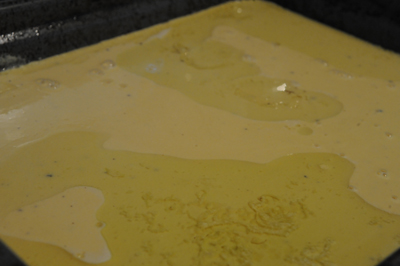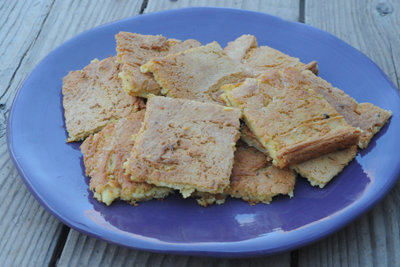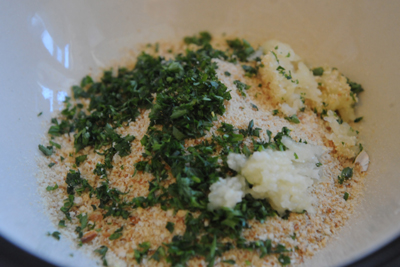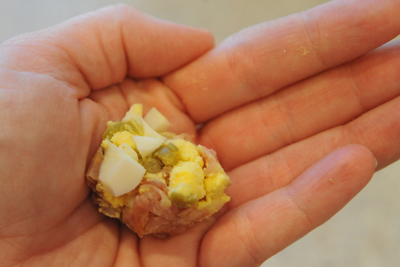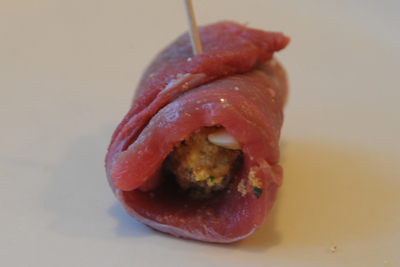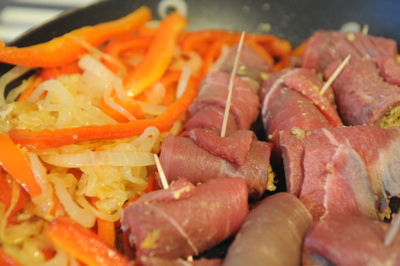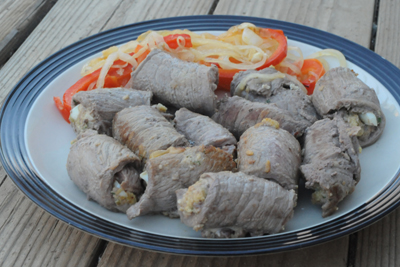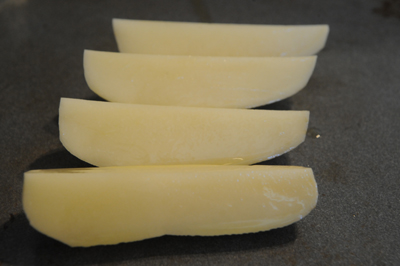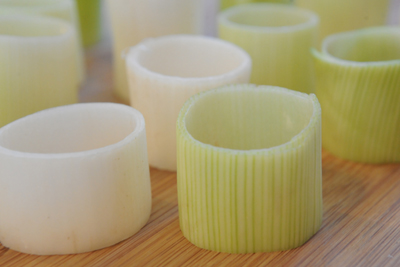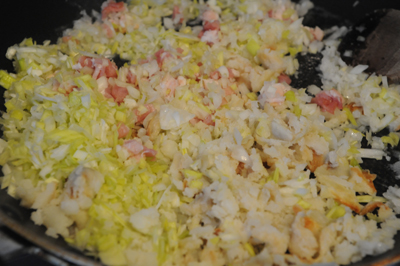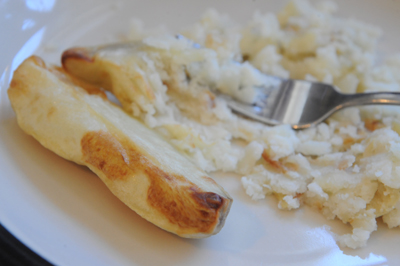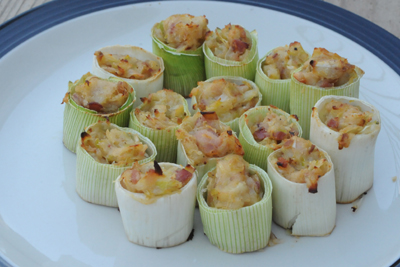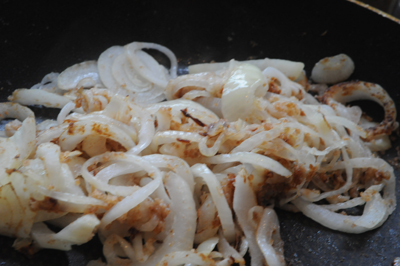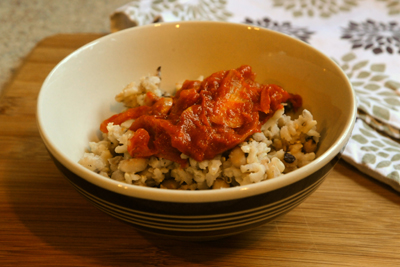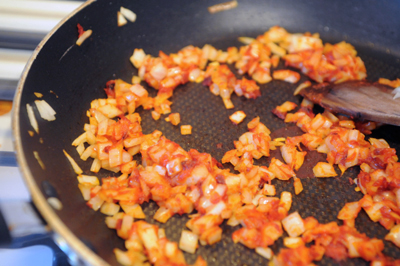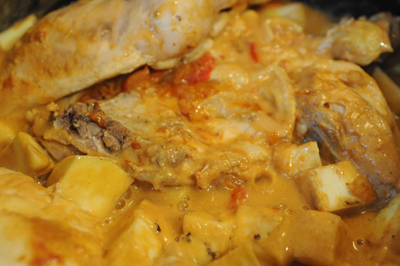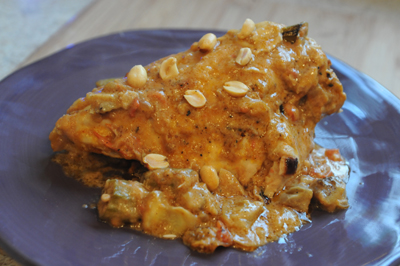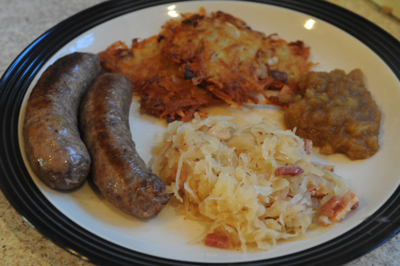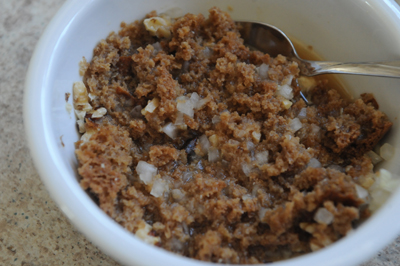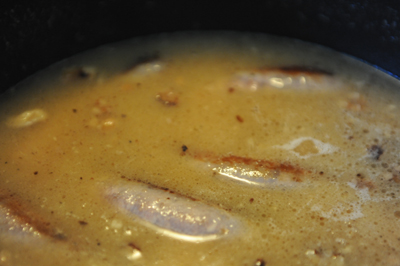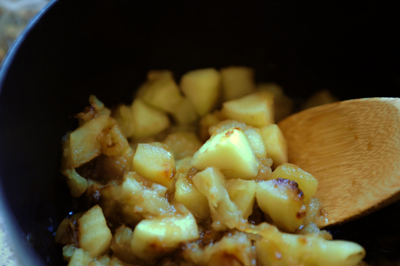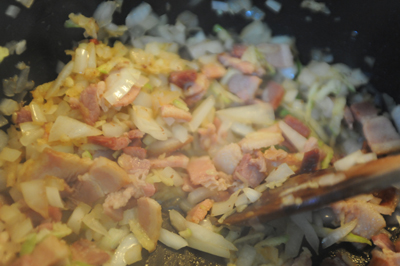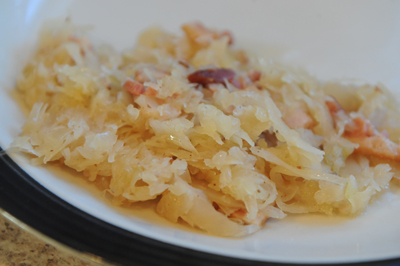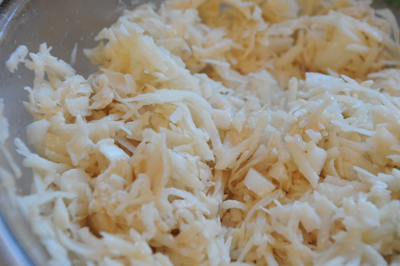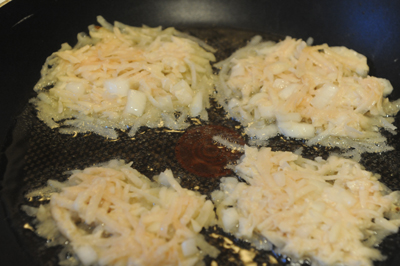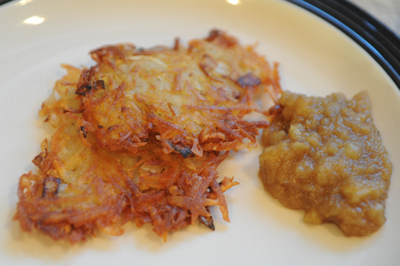After a decade of living in the San Francisco Bay Area, it was a bit of a shock to move here to Gold Country. I mean, it was great because we got out of the traffic, away from the obnoxiously high home prices, and into the (mostly) clean air. But the trade-off is that we are no longer living in a culturally-diverse place. Oh no, around here the two dominant cultures are Hippies and Cowboys. Oops, I hope I didn't just offend someone.
Anyway if I was still living in the Bay Area, I'd have a lot more opportunity to obtain recipes from people who have actually lived in the countries I write about. So I have to say that I was absolutely giddy about doing Germany, because one of the few people I know here in town (besides my husband) who wasn't born and raised in the US is my kids' German swim teacher.
Ina has been teaching my kids to swim since they were babies, in fact I kind of wish she was my nanny because my kids probably respect her more than they do me. Anyway Ina was kind enough to lend me her German cookbook, provide menu suggestions and share her awesome sauerkraut recipe with me. So besides being grateful that she's turned my kids into swimmers (currently their very favorite activity in the world) I am also grateful that she made this week's blog entry an awesome one.
So in the tradition of Travel by Stove I have to start out by talking a little bit about Germany, which seems silly because most people know at least something about Germany—it's one of the major European nations. In fact Germany is the word's fourth-largest economy, a global leader in a number of technological and industrial sectors, and also the second-largest exporter of goods. Germans in general live very well—their country has a comprehensive social security system and a universal health care system that is the oldest in the world. Also, they have that one highway where there's no speed limit.
German food is good. If you don't believe me, ask the people who give out Michelin stars—with nine German restaurants receiving three stars (Michelin's highest designation) and 15 more with two stars, Germany is second only to France in the number of restaurants recognized in this way. So yeah, I had to get Germany right. Thank goodness for Ina. Here's the menu she gave me:
Bratwurst in Bier
(The recipe itself came from a German language recipe site called
Kochbar)
- 4-6 bratwurst sausages
- 1 bottle malt beer
- 4 tbsp gingerbread sauce (recipe follows)
- 1/2 cup milk
- 2 tbsp margarine
- Salt
- Pepper
- Sugar
- Lemon juice
Yes, there is some weirdness in that recipe. More on that later.
Next, the
gingerbread sauce, otherwise known as
Lebkuchensoße:
(This recipe also came from
Kochbar)
- 3/4 cup chicken stock
- 2 1/2 oz gingerbread
- 1 oz walnuts, crushed
- 2 tbsp lime juice
- 2 chopped onions
- Salt
- Black pepper
- Parsley
And on the side:
Kartoffelpuffer (Potato Pancakes)
(This one came from Ina's cookbook, entitled
The New German Cookbook by Jean Anderson and Hedy Wurz)
- 1 3/4 lbs baking potatoes, peeled and coarsely shredded
- 1 medium yellow onion, peeled and roughly chopped
- 5 tbsp all-purpose flour
- 1 tsp salt
- 1/2 cup corn oil
The German way to eat potato pancakes is with applesauce, so I also made this:
Apfelmus
(I
think this recipe is also from
Kochbar, but I seem to have lost the source.)
- 2 lbs apples (I used Granny Smith)
- 1/2 cup apple juice
- Cinnamon
- Vanilla sugar
And finally, the crown jewel of this meal:
Ina's Sauerkraut
- 1 large jar sauerkraut
- 1 cube beef broth
- 1 small onion, chopped
- Dry white wine
- 1 apple, shredded (peel on)
- 1/2 tsp caraway seed (optional)
- 5 slices bacon, cut into small pieces
I made the gingerbread sauce first, so let's start there.
Now, as near as I can tell there are about 150 billion different ways to make gingerbread sauce, and they are all really, really different. This is one of the few I found that you don't make alongside some other dish (and hence from the juices of whatever you are cooking), so it's the one I went with. I had good results, but I don't really know if it was exactly correct. Anyway it's not difficult, and here's how:
Soak the gingerbread in the chicken stock for a few minutes, then add the walnuts and onions. Stir until the gingerbread breaks apart and you get a paste.
Heat a small amount of oil over a hot stove and saute the gingerbread paste until the onions become translucent. Add the lime, herbs and seasonings. That's it!
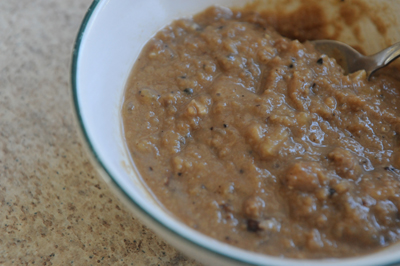 |
| Ew, not a very appetizing photo. Sorry. |
Now for the brats:
Prick the sausages first so they don't burst, then brown them on both sides.
Turn the heat down to low, then add the margarine and the milk. Stir to combine, then pour in the beer and the gingerbread sauce.
Add the salt, pepper, sugar and lemon juice and then bring to a simmer. Keep simmering until the sausages are cooked through.
Now if you're like me, you looked at this recipe and thought, "Hmm, if the milk doesn't curdle from the heat, it's going to curdle when I put the lemon juice in there." 'Cause you know, that's basically the recipe for paneer. But I did it anyway, because that's what the recipe said, and the milk curdled. It looked pretty awful so I banked on not really needing to have those curds in there and I strained the broth. My brats tasted awesome so I don't feel like it was the wrong move, but I still thought it was a bit strange.
Anyway next the applesauce, which is another simple, straightforward recipe:
Peel and core the apples. Roughly chop them and then put them in a large pot with the juice. Bring to a boil, reduce heat and simmer for 10 minutes or until soft.
Mash them with a potato masher and season to your liking with cinnamon and vanilla sugar. (By the way you can make vanilla sugar pretty easily by scraping the insides of one vanilla bean into about two cups of sugar, then mixing thoroughly).
Now the sauerkraut. Are you tired yet?
In a large pot, lightly brown the bacon, then add the onions and apple. Bring to a boil, reduce heat and simmer, covered, for about 5 minutes.
Add the sauerkraut and enough white wine to cover. Bring to a boil, then add the beef cube and the caraway seed. Reduce heat and simmer, covered, for 45 minutes to an hour. Adjust seasonings and wine to your liking. If you want your sauerkraut to be a little drier, take the lid off in the last few minutes of cooking, stirring frequently.
OK finally the potato pancakes. You definitely want to do these last, since the fresher they are the nicer they will taste. Here goes:
Put the potatoes in a large mixing bowl with the onion, flour and salt. Mix with your hands until well incorporated.
Heat the oil in a heavy skillet. To test readiness, drop a little bit of potato into the oil--if bubbles form, the oil is ready. Scoop up the potato mixture in 1/4 cup portions and drop onto the skillet. Flatten with your spatula to about 1/4 inch thickness.
Cook the pancakes for about 2 1/2 to 3 minutes on both sides, or until nicely brown and crisp in texture. Keep warm between layers of paper towels until ready to serve. Serve with the applesauce.
So we made a little party of this meal and invited some German-food-loving friends over. It got rave reviews, even from Martin who warned me in advance that he doesn't like bratwurst and then took one bite of the bratwurst and declared that it was delicious. My kids devoured those sausages like piranhas. In fact I should have made all 14 of the ones I had (maybe even more), and instead I unwisely opted for a round dozen.
Now I haven't had a ton of experience with sauerkraut but this was by far the best I've ever had. The bacon gave it some subtle smokiness and the wine just made it taste, you know, freaking yummy.
And the pancakes—I was really afraid I was making too many of them but there was not a pancake remaining by the time the meal was over. Topped with the applesauce they were really delicious. Like really, really delicious. My kids ate them in spite of the onions, which is really saying something.
Now yes, this was not a very diet-friendly meal. Oh no. I think I gained a pound just cooking it. But I would do this whole meal again, maybe in celebration of losing a bunch of weight or something (haha). This is definitely worthy of another evening-with-friends or just a nice once-in-a-while meal.
It's great when I find a gem, but even better when the whole meal is a gem!
Next week: Ghana
For printable versions of this week's recipes:
